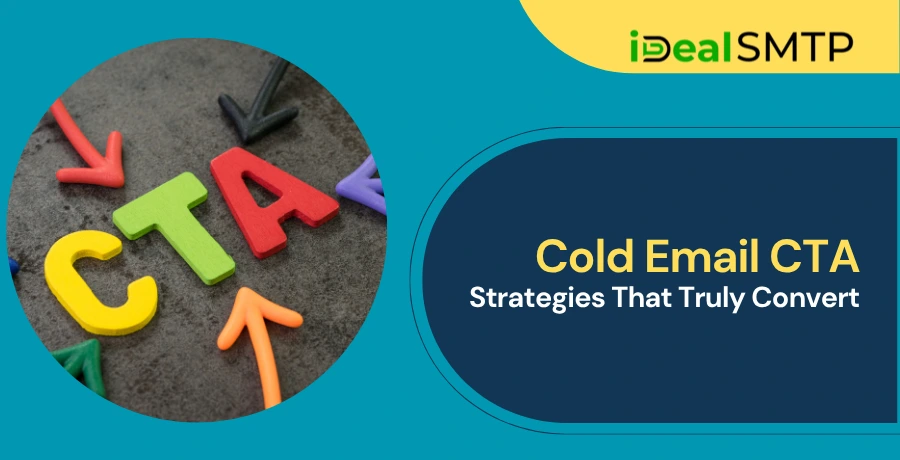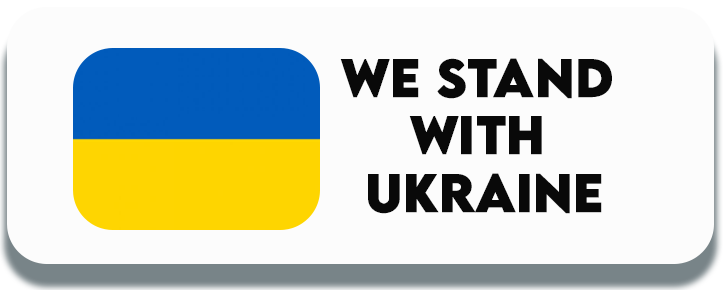Cold emailing remains one of the most powerful tools for initiating business relationships, especially in B2B scenarios. The difference between a successful cold email campaign and one that flounders often boils down to a single element: the call-to-action (CTA). A cold email without a clear and compelling CTA is like a ship without a rudder. It might float, but it’s going nowhere fast.

In this comprehensive guide, we delve deep into Cold email CTA strategies, Cold email engagement strategies, and the art of crafting irresistible CTAs.
We also explore how tools like an SMTP server, email marketing platforms, and bulk email service providers play a pivotal role in enhancing the overall cold email experience. If you’re looking for better delivery, engagement, and response rates, it’s time to understand what makes irresistible CTAs in cold emails work.
Table of Contents
Pricing
| Trail Plan | Standard Plan | Premium Plan | Professional Plan |
| $50 | $145 | $185 | $225 |
| Sending Limit | Sending Limit | Sending Limit | Sending Limit |
| 1000 Emails/Hour | 1500 Emails/Hour | 3000 Emails/Hour | 5000 Emails/Hour |
The Importance of a Strong CTA in Cold Emails
When you send a cold email, your recipient doesn’t know you. They haven’t subscribed to your list, and they have no previous relationship with your brand. That’s why your CTA must be not just clear, but irresistible. It should guide the reader toward a specific action, whether it’s scheduling a call, downloading a lead magnet, or replying to the email.
Effective cold email CTAs are born from understanding human psychology, buyer behavior, and the value proposition your brand offers. When executed properly, the CTA becomes the bridge that connects interest to action.
Understanding Cold Email Engagement Strategies
Before we dive into CTA crafting, we must appreciate the broader picture of cold email engagement strategies. Engagement is everything. If recipients don’t open, read, or interact with your email, even the most compelling CTA will fall flat.
Key engagement strategies include:
- Crafting personalized subject lines
- Using a friendly yet professional tone
- Providing immediate value in the first few lines
- Timing your emails strategically
- Segmenting your audience for relevance
But once these strategies get you in the door, it’s the CTA that closes the deal.
Crafting Irresistible CTAs- The Psychology Behind the Click
Let’s get into the meat of it, crafting irresistible CTAs. What separates a forgettable line like “Let me know if you’re interested” from a powerful CTA that prompts instant replies?
The answer lies in five psychological principles:
- Clarity: Don’t confuse your reader. A CTA must be direct and unambiguous.
- Urgency: Time-sensitive language like “today,” “now,” or “limited slots” adds motivation.
- Value: Highlight what the reader gains by taking action.
- Simplicity: One clear action per email—never ask for multiple things.
- Low friction: Make it easy. A simple click, reply, or yes/no answer works best.
Examples of irresistible CTAs:
- “Can we jump on a 10-minute call this week to explore this further?”
- “Reply with ‘Yes’ and I’ll send you the next steps.”
- “Would you be open to a 5-minute chat tomorrow or Thursday?”
These CTAs work because they’re easy to say yes to and immediately actionable.
Effective Cold Email CTAs- Tailored to the Funnel Stage
Different cold email campaigns serve different purposes. Your CTA should align with where your prospect is in the funnel.
Top-of-funnel CTA examples
- “Are you the right person to speak with about this?”
- “Would it make sense to connect for a brief introduction call?”
Middle-of-funnel CTAs
- “Want to see a quick demo of how this could work for your team?”
- “Would you like to review a custom proposal?”
Bottom-of-funnel CTAs
- “Ready to get started? Here’s the signup link.”
- “We’re onboarding two new clients this week—want to be one of them?”
Effective cold email CTAs depend on timing, context, and readiness. Misaligned CTAs can scare away prospects or lead to dead ends.
Tools That Boost CTA Performance
Behind every successful email campaign is a reliable infrastructure. Let’s explore how the backend contributes to CTA success.
SMTP Server
An SMTP server (Simple Mail Transfer Protocol) is the backbone of email delivery. Without a reliable SMTP server, even the best CTA won’t see the light of a recipient’s inbox. Choosing a high-quality SMTP provider ensures:
- High deliverability rates
- Fewer spam complaints
- Authentication via SPF, DKIM, and DMARC
Email Marketing Tools
Modern email marketing platforms offer automation, A/B testing, personalization, and analytics that are vital for optimizing CTAs. These platforms help marketers:
- Track click-through and response rates
- Experiment with different CTA placements
- Segment lists based on behavior
Bulk Email Services
A bulk email service ensures scalability. When you’re reaching thousands of prospects, you need bulk delivery power combined with targeting precision. Services like SMTPget, Mailgun, and iDealSMTP specialize in mass delivery without compromising on engagement.
Real-Life Cold Email CTA Scenarios
Imagine you’re reaching out to HR managers about your HR software. Here are two approaches:
Weak CTA:
“Let me know if you’re interested.”
Strong CTA:
“Would you be open to a 7-minute call on Thursday to explore how we helped XYZ Corp reduce onboarding time by 40%?”
The second CTA is specific, time-bound, and highlights value—perfect for driving action.
A/B Testing- The Key to Refining Cold Email CTA Strategies
Your first CTA attempt may not be your best. A/B testing helps identify which language, structure, or tone converts best. Try different versions:
- “Book a time here” vs “Reply if you’re interested”
- “Can we talk Tuesday at 11?” vs “Are you free this week for a chat?”
Track open, click, and reply rates to continuously improve your cold email CTA strategies.
Avoiding Common CTA Mistakes
Even experienced marketers make mistakes. Avoid the following pitfalls:
- Using vague CTAs like “Let’s connect.”
- Asking for too much too soon
- Including multiple CTAs in one email
- Using passive language
Each email should have one goal. One action. One path.
Irresistible CTAs in Cold Emails- Crafting With Personalization
Personalization is the cherry on top. Referencing the recipient’s role, company, or recent achievement can increase your chances dramatically.
Example:
“Saw that your team recently expanded. Would it be worth chatting about how we streamline onboarding in under a week?”
This level of personal touch turns your CTA from generic to irresistible.
Monitoring and Optimizing for Long-Term Success
Monitor not just clicks and replies, but downstream metrics like:
- Meetings booked
- Deals closed
- Customer retention
Use these metrics to inform future cold email engagement strategies and fine-tune your CTA language.
If you’re ready to scale your cold email efforts without sacrificing quality or deliverability, it’s time to partner with a provider that understands your needs. iDealSMTP helps you turn cold contacts into warm leads, fast.
“Let’s explore how iDealSMTP can power your next outreach campaign.“
Final Thoughts
Cold emailing is both an art and a science. While subject lines and personalization get your foot in the door, it’s your CTA that invites the recipient to step inside. By focusing on Cold email CTA strategies, leveraging tools like SMTP servers and bulk email services, and continually optimizing based on performance data, you can transform your cold emails into high-converting touchpoints.
And remember, every line you write is a step toward building trust. Make sure your CTA is clear, compelling, and above all, irresistible.
FAQs
Here are the top FAQs on Cold Email CTA:
1. What is a Cold Email CTA?
A Cold Email CTA is a clear, compelling request that guides recipients to take specific action, like replying or booking a call.
2. Why is a CTA important in cold emails?
It gives direction and purpose, turning interest into action.
3. How many CTAs should a cold email have?
Only one. Multiple CTAs create confusion and reduce response rates.
4. What are examples of CTAs that work well in cold emails?
Great examples include:
- “Would you be open to a quick 5-minute call tomorrow?”
- “Reply ‘Yes’ if you’d like the free demo.”
- “Can we schedule a 10-minute intro call this week?”
These CTAs are simple, direct, and easy to act on.
5. What psychological principles make CTAs irresistible?
There are five key principles:
- Clarity: No ambiguity.
- Urgency: Encourages prompt action.
- Value: Communicates benefit.
- Simplicity: One ask per email.
- Low Friction: Easy to follow through.
Together, these ensure your CTA gets attention and action.
6. What should I avoid when writing a cold email CTA?
Avoid:
- Generic phrases like “Let’s connect”
- Passive language
- Asking for too much (like a 30-minute demo from the get-go)
- Including more than one CTA per email
One clear and compelling CTA works best.







